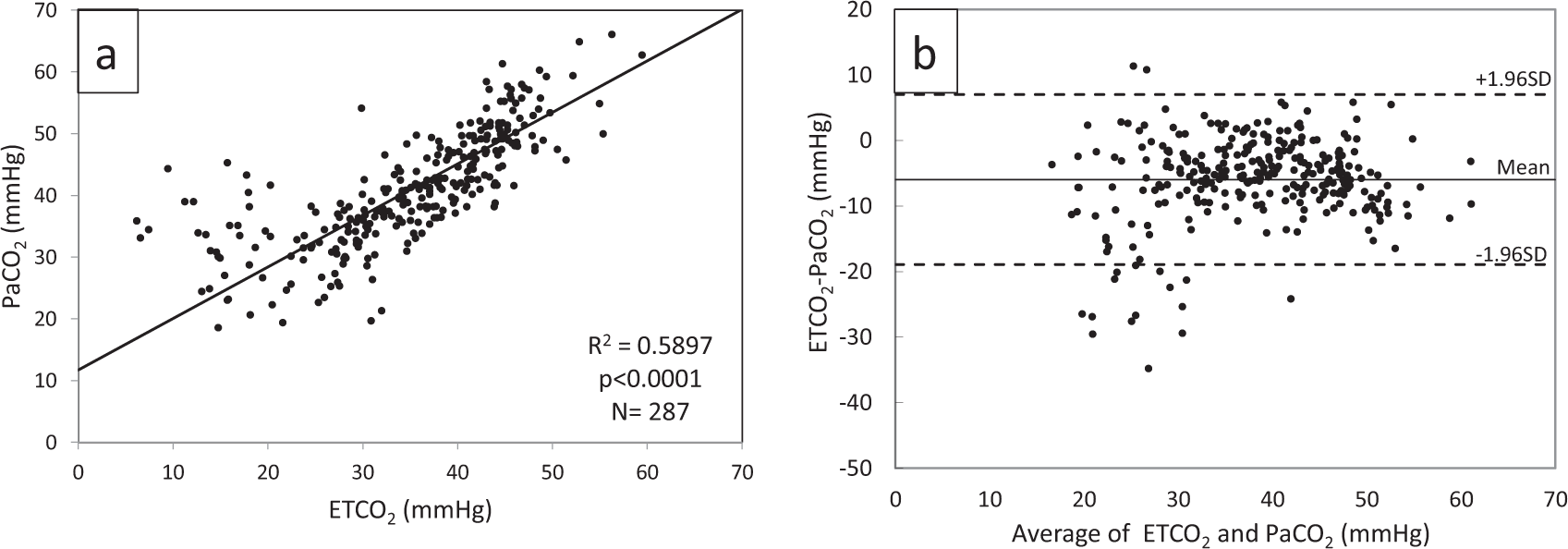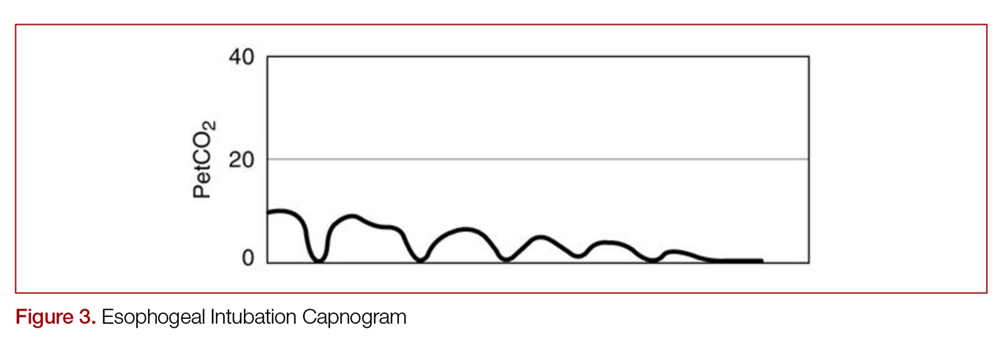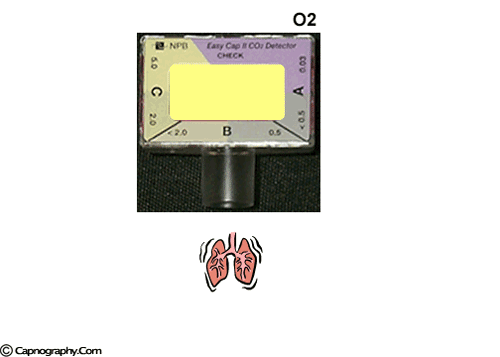normal end tidal co2 after intubation
The amount of CO2 at the. Finally the endotracheal tube was.
Emdocs Net Emergency Medicine Educationinterpreting Waveform Capnography Pearls And Pitfalls Emdocs Net Emergency Medicine Education
More Than Just a Number.

. End-tidal CO2 may be useful here as an easily and immediately measurable index of changes in cardiac output. Immediately after intubation etCO2 can help adjust the ventilator settings. Although the normal range for CO2 should be between 35-45mmHg CO2 monitoring gives healthcare providers a lot more insight into what is going on with a patients.
The second intubation showed a normal end-tidal carbon dioxide wave form that declined over a minute accompanied by decreasing oxygen saturation. Capnograph is an indispensable tool for monitoring metabolic and respiratory function. Changes in the shape of the capnogram are diagnostic of disease conditions while changes in end-tidal CO 2 EtCO 2 the maximum CO 2 concentration at the end of each tidal.
End-tidal CO2 EtCO2 monitoring is a measure of metabolism perfusion and ventilation. The normal values are 5-6 CO2 which is equivalent to 35-45 mmHg. Normal ETCO2 is in the.
This will generally result. End tidal is used as the gold standard for confirmation of endotracheal tube position. Although the normal range for CO2 should be between 35-45mmHg CO2 monitoring gives healthcare providers a lot more insight into what is going on with a.
The amount of CO2 at the end of exhalation or end-tidal CO2 ETCO2 is normally 35-45 mm HG. 2 to near normal normal EtCO 2 35-45 mmHg represents marked increase of CO 2 delivery to lungs suggesting ROSC If patient develops an organized rhythm after VFVTasystole check. A normal trace appears as a series of rectangular waves in sequence with a numeric reading capnometry that shows the value of exhaled CO2.
The second intubation showed a normal end-tidal carbon dioxide wave form that declined over a minute accompanied by decreasing oxygen saturation. Capnography is the most reliable indicator that an endotracheal tube is placed in the trachea after intubation. The second intubation showed a normal end-tidal carbon dioxide wave form that declined over a minute accompanied by decreasing oxygen saturation.
Normal EtCO2 range is about 35-40 mmHg. The normal ETCO 2 is about 38 mm Hg. First 20 minutes after intubation was.
An increase in etCO2 by 5 appears to have reasonable. Authors A J Sayah 1 W F Peacock D. In the ED we typically think of a EtCO2 as a marker of.
In this study the aim was to review the applications of end-tidal carbon dioxide. End-tidal capnography or end-tidal CO2 EtCO2 monitoring is a non-invasive technique that measures the partial pressure or maximal concentration of carbon dioxide.

Ems Assessment And Treatment Of Asthma 5 Things To Know Capnoacademy Capnoacademy
End Tidal Co2 The Drummer Of The Vital Sign Band Pem4
Riding The Wave Of Capnography Understanding Etco2 Vetbloom Blog

Endotracheal Tube Confirmation

Monitoring Exhaled Carbon Dioxide Respiratory Care
Emdocs Net Emergency Medicine Educationcapnography In The Ed Emdocs Net Emergency Medicine Education

Capnography In The Pediatric Emergency Department Clinical Applications

End Tidal Capnography Background Indications Technical Considerations
Herr You Think You Know Etco2 University Of Maryland

Effect Of Tidal Volume And End Tracheal Tube Leakage On End Tidal Co2 In Very Low Birth Weight Infants Journal Of Perinatology

End Tidal Oxygen Measurement White Paper Clinical View

Waveform Capnography In The Intubated Patient Emcrit Project

End Tidal Capnography In The Emergency Department Mdedge Emergency Medicine

End Tidal Co2 In Cardiac Arrest Nuem Blog
Herr You Think You Know Etco2 University Of Maryland

How To Read And Interpret End Tidal Capnography Waveforms

Waveform Capnography In The Intubated Patient Emcrit Project

Etco2 Valuable Vital Sign To Assess Perfusion The Airway Jedi
